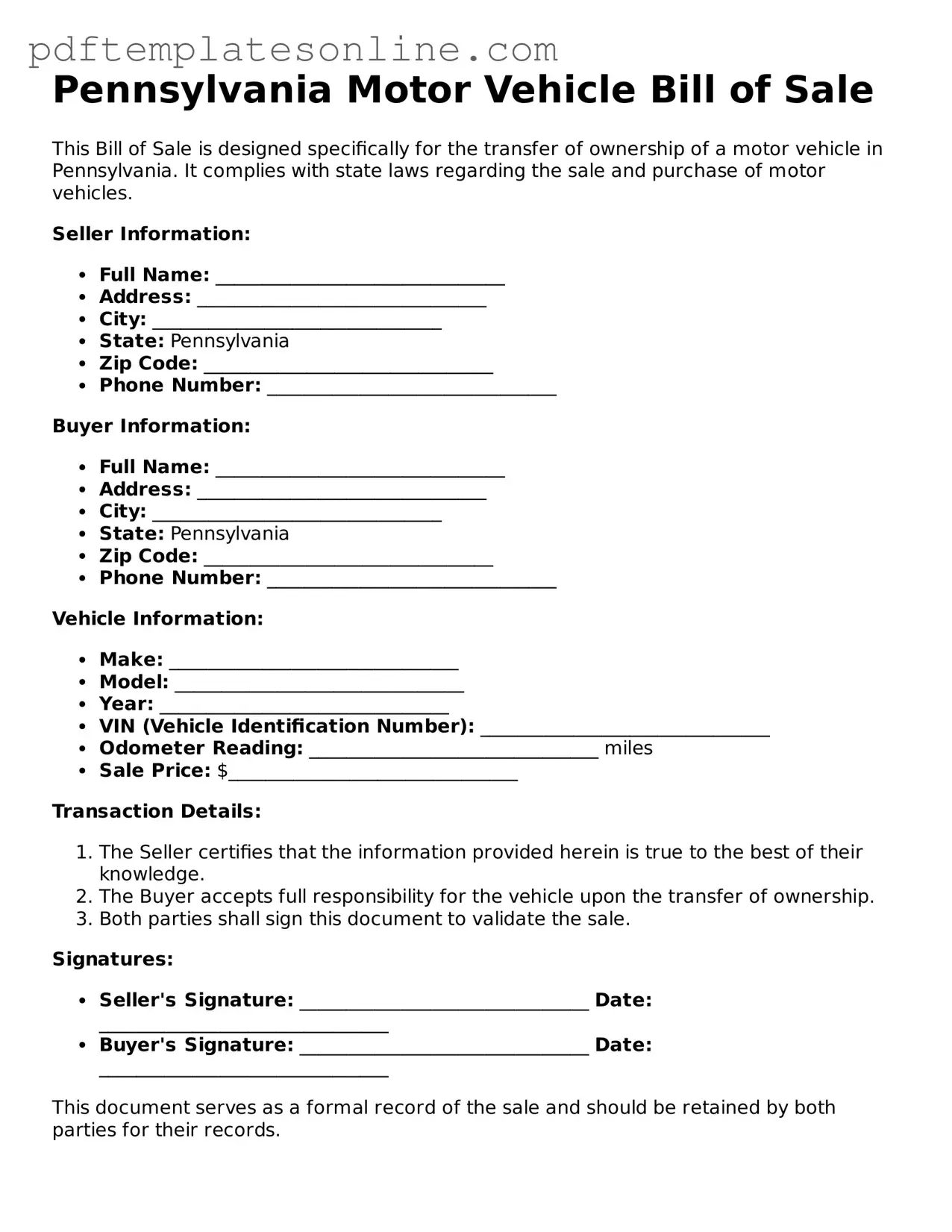When filling out the Pennsylvania Motor Vehicle Bill of Sale form, many individuals inadvertently make mistakes that can complicate the transfer of ownership. One common error is not providing complete information about the vehicle. This includes details such as the Vehicle Identification Number (VIN), make, model, and year. Omitting any of these crucial elements can lead to confusion and may delay the registration process.
Another frequent mistake is failing to include the correct names and addresses of both the seller and the buyer. It is essential to ensure that all parties are clearly identified. Mismatched or incomplete names can create issues down the line, especially if disputes arise regarding ownership.
Many people overlook the importance of documenting the sale price accurately. The form requires the exact amount paid for the vehicle. Leaving this field blank or entering an incorrect figure can lead to problems with tax assessments and registration. It is advisable to double-check this information before submitting the form.
Additionally, some individuals neglect to sign and date the form. Both the seller and the buyer must provide their signatures to validate the transaction. Without these signatures, the document may not hold up in legal situations, leaving both parties vulnerable.
Some people also forget to provide the odometer reading at the time of sale. This information is crucial for verifying the vehicle's mileage and can impact its value. Failing to record this detail can lead to misunderstandings or disputes later on.
Another common oversight is not keeping a copy of the completed Bill of Sale. This document serves as proof of the transaction and can be vital for both parties. Without a copy, individuals may find themselves without documentation if questions arise in the future.
Moreover, individuals sometimes fail to check for additional requirements specific to their county or municipality. Different areas may have unique regulations regarding vehicle sales. Ignoring these local rules can result in unexpected complications.
Finally, many people rush through the process, leading to careless mistakes. Taking the time to review the form thoroughly before submission can prevent many of these issues. A careful approach ensures that the transaction is smooth and legally sound.
